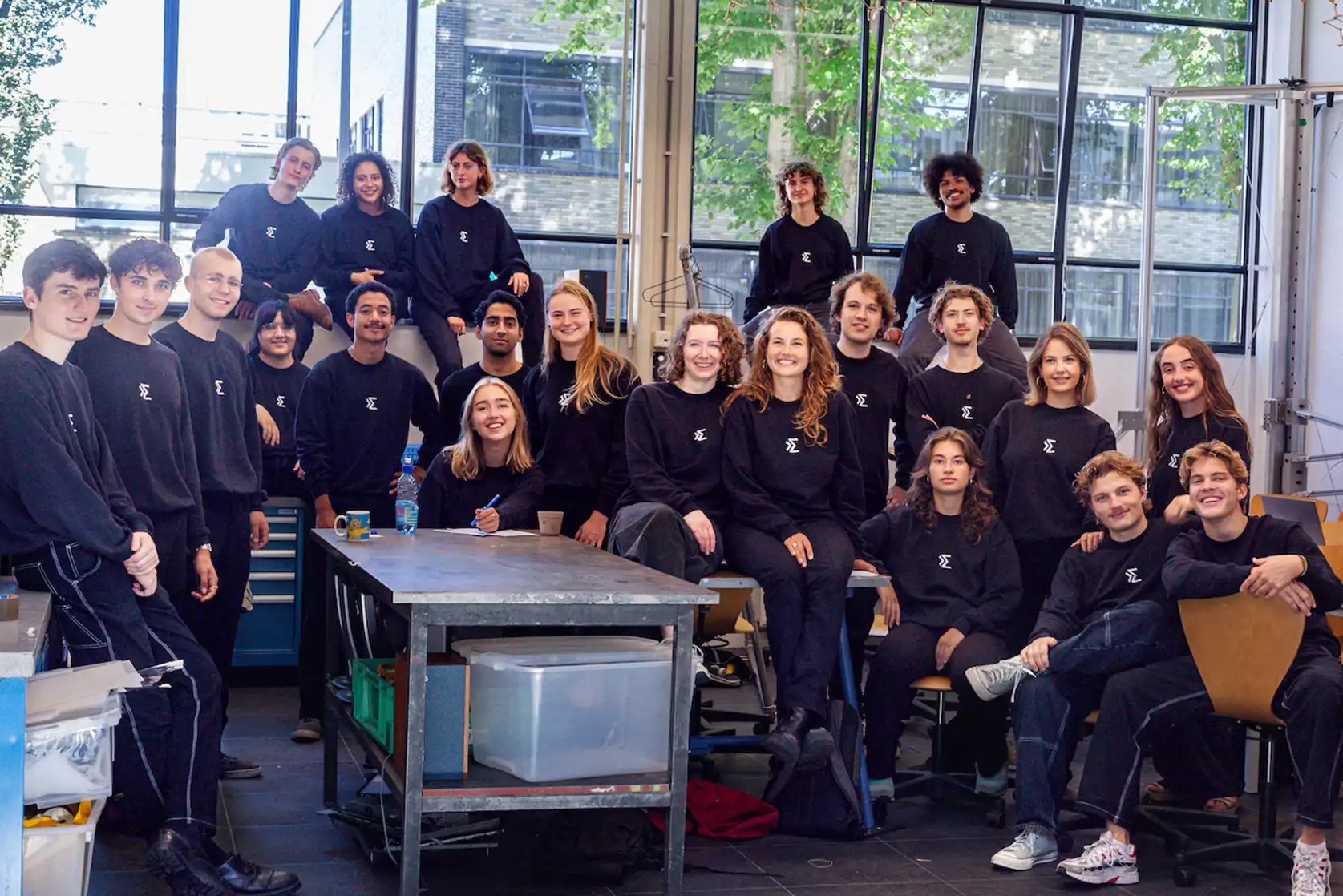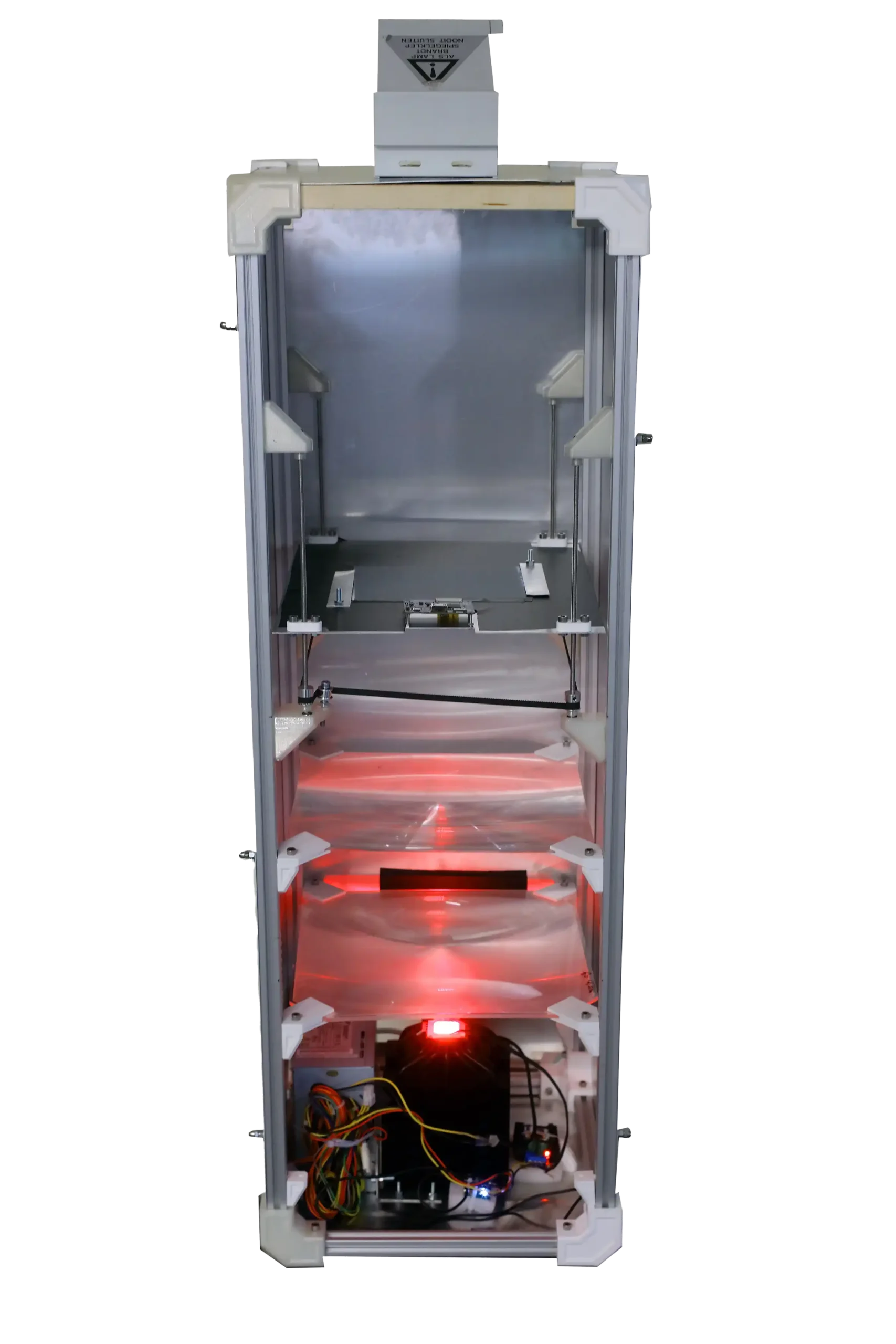© Photos: Sam Rentmeester | Montage: Ontwerpwerk
Text Oscar Greenwell
The new Dream Team has started projects entailing creative, curiosity-driven research. To do so, it collaborates with local art schools – somewhat of a rarity at TU Delft. Emergence seeks to create ‘new media art’, an art form that offers insight into successful but misunderstood technologies. ‘New media art’ is contemporary art that uses modern media technology such as computer animation or robotics to create interactive experiences. New media art installations are often complex works with elements such as video, sound, computer-generated graphics and sensors. These installations are suitable for exploring the relationship between humans and technology, such as social changes resulting from digital culture and the fusion of material and virtual worlds of experience. A great example is Waterlicht, an award-winning installation conceived at Studio Roosegaarde in Rotterdam, which travelled around the world. This exhibit immerses observers in a “virtual flood”, giving them a visceral experience of rising sea levels due to climate change. According to Lars Geluk, co-founder of Emergence, “such an experience has a totally different impact on people than just an IPCC report where you are presented global emissions statistics.”

Dreamteam Emergence.
© Shreyas Sidhar

The Dream Hall.
© Oscar Greenwell
Black box
The idea of ‘blackboxing’ was first described by sociologist Bruno Latour in the late 1990s. The ‘black box’ is a metaphor for complex systems and technologies. Blackboxing assumes that users increasingly focus on the inputs and outputs of technologies. The internal workings remain invisible to them. A good example is the TV remote control, which we use to casually zap past channels. This device is a kind of ‘black box’ that you don’t need to know how it works – while eating popcorn, you just press the intuitively arranged buttons and choose the channels. On blackboxing, Latour wrote: ‘As science and technology become more successful, paradoxically they also become increasingly opaque and impenetrable.’
Emerging victorious
The inspiration behind the founding of Emergence came from students Angela Hanna (industrial design engineering) and Lars Geluk (Applied Physics and Industrial Design Engineering at TU Delft and ArtScience at the Royal Academy of Art in The Hague). Hanna interned as a programme maker for the festival Highlight Delft and Geluk interned at Studio Drift in Amsterdam. Both these organisations work in the field of art and technology. Inspired by this, the two paired up and conceived the Dream Team. They both felt that there was a wellspring of untapped potential for interaction between art, science and engineering at TU Delft, and that an official team’s entry into the Dream Hall could stimulate the required interdisciplinary cross-pollination.
August, the team set to work. Geluk: “There are festivals, studios, and competitions working at this intersection. People like combining art and technology, but really bringing the expertise that is present here at a technical university into that context, that doesn’t really happen.” Emergence managed to persuade 20 Delft students from various disciplines to take time out of their studies to participate in realising their vision. The team collaborates with a group of students from the KABK and has plans to work with other art academies in the project in the future. “We really want to see where we can take our technology by collaborating with art students. We want to push them, and they want to push us,” explains Joris Kuijper, Emergence team member.
‘We really want to see where we can take our technology by collaborating with art students’
What are Dream Teams?
TU Delft is known worldwide for its successful student teams (such as Delft Hyperloop, Project March and Eco-Runner). These Dream Teams are managed entirely by the students themselves. With a completely new international and interdisciplinary team every year, they compete in a competition to put technical innovation on the map that contributes to a better future. The execution – from team management to designing and producing their inventions – takes place at the Dream Hall on campus.

The proof of concept of the infrared projector that Dream Team Emergence is building to explore the intersection of the real and the virtual. This will be the basis of an art installation that will be on show in February at the Highlight Delft festival.
© Sam Rentmeester
Storytellers
As a prerequisite for being accredited as a Dream Team, TU Delft states there must be a ‘clear competition-driven goal’. Emergence will enter the prestigious Prix Ars Electronica competition, the longest-running media art competition in the world. How does Emergence reconcile the competitive spirit of a Dream Team with the nature of art as a subjective endeavour, where there are no clear winners and losers? Geluk answered: “It’s not about the prize money. We want to show our installation at the exhibition so a larger audience can hear our story.” The team plans to create a “new medium” every year to serve as a basis for their art installation. This year, the team intends to create an ‘augmented reality’ technology that toes the line between real and virtual via infra-red projection. How? Infrared light is, of course, not visible to the naked eye and most cameras have a filter that stops them from picking it up. But they can be tuned to ‘see’ it. This should make it possible to design a projection visible through the lens of a camera or other device sensitive to infrared light. TU Delft is not the only technical university that sees potential in such interdisciplinary creative teams. MIT’s famous Media Lab in the USA (founded in 1985) regularly carries out projects at the intersection of art, science and engineering. This led to some of the most impactful technologies that we use today, such as touchscreens and GPS. Emergence students are grateful for their own space in the Dream Hall. “We are really happy that we got this space. It’s really big of the Dream Hall to open up their doors for something like us, in quite a technical environment” Hanna exclaims.
Emergence’s latest installation can be seen at the festival Highlight Delft, from 15 to 17 February 2024.
